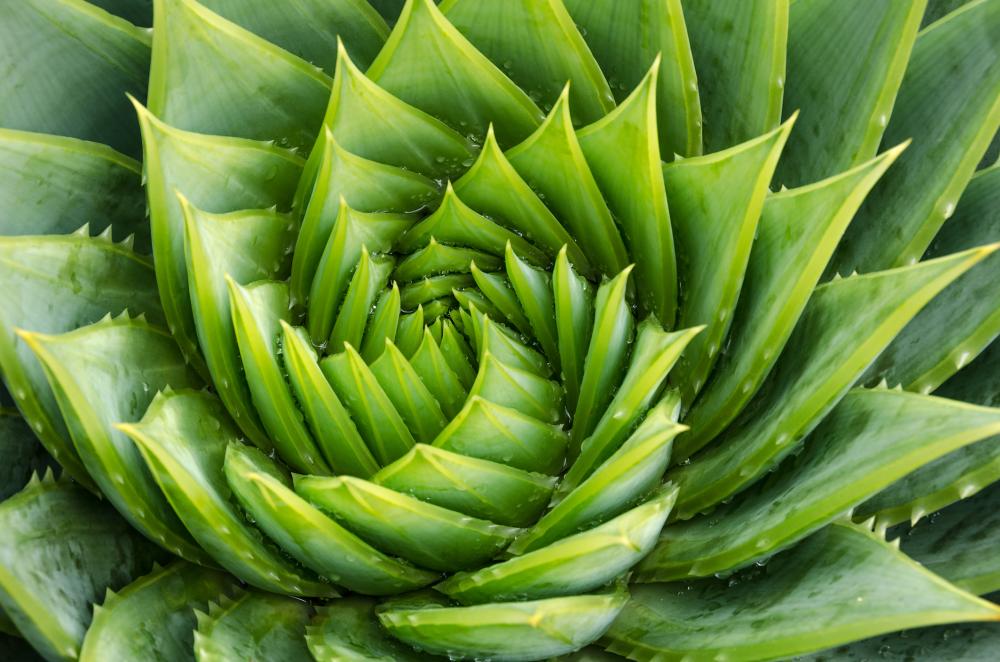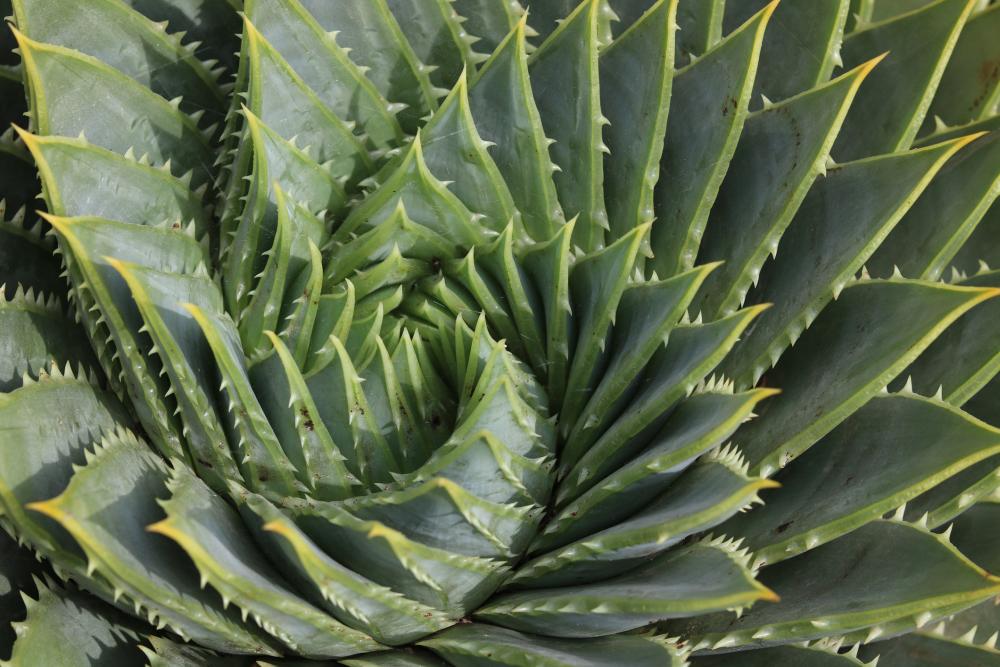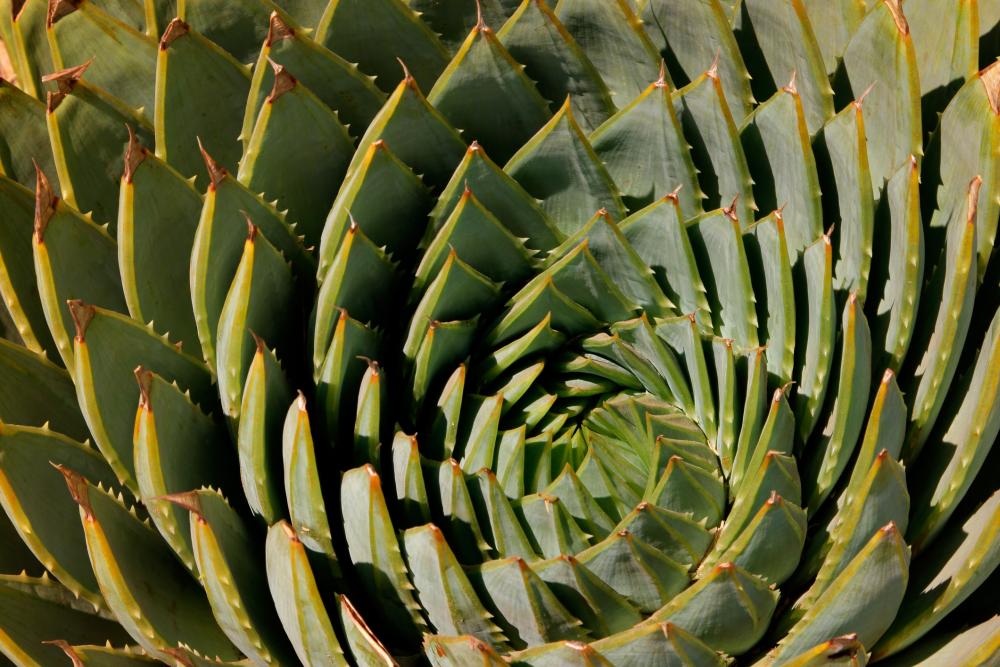Landscaping rock gardens can be a tough grind. If you want to fill up an idling outdoor space, then the Spiral Aloe succulent could be a perfect fit. The perennial succulent is a member of the Asphodelaceae family and its natural environment has been rocky hills, so the plant is capable of growing in a rugged environment.

In this guide, we’ll check out the growing habits of the Spiral Aloe, alongside some of the best practices when taking care of it.
More About the Spiral Aloe
The Spiral Aloe, also scientifically known as Aloe polyphylla, is a succulent that remains dense-green throughout the seasons. It comes from the Aloe genus and is native to South Africa. As it grows older, the leaves tend to grow in symmetrical and spiraling patterns. Like some of the other common succulents, the leaves of the Spiral Aloe have purplish-brown spikes and each mature plant will hold between 20 to 30 leaves.
Apart from containers, this succulent is a perfect fit if you have a rock garden. On average, the Spiral Aloe will grow up to 2’ feet wide. The stemless, cold-hardy succulent will either spiral towards the left or right side. Some of the growing conditions you need to calibrate to make this succulent thrive include temperature, watering, humidity, and soil structure.
Spiral Aloe Caring Tips

Flowering & Fragrance
During the blooming season, you can expect the Spiral Aloe to produce a few salmon-pink flowers. The blooms will begin to appear after the first few weeks of the spring season. Each branching spike can give room for a few flowers. Mature types have a better chance of producing blooms than younger ones. Summer is also a perfect season to expects flowers from your Spiral Aloe plant.
Light & Temperature
While succulents are notorious for tolerating extreme conditions, don’t be tempted to grow them under the scorching sun. The Spiral Aloe in particular doesn’t need intense light to have pleasing foliage. At the same time, it’s worth noting that this succulent is accustomed to growing outdoors. So, bringing it indoors isn’t a viable option. What makes it survive outdoors throughout the seasons is it has cold-hardy traits. It can keep up with temperatures as low as 20 degrees Fahrenheit. However, make sure not to expose your Spiral Aloe to lengthened periods of freezing temperatures.
If you’re living in a region with prolonged frosting conditions, you want to grow this succulent inside a container so you can move it indoors during winter. The gladdening part about the Spiral Aloe is it will keep up with low temperatures when mature, compared to when it’s in the early sprouting stages. And since the succulent can’t tolerate high temperatures, it would be best to pick a location with some partial shade. Keep it far from temperatures that persistently tend to go beyond 80 degrees Fahrenheit.
Another essential pointer to note is the succulent won’t keep up with strong winds or high humidity levels. Grow it in an environment with mild temperatures throughout the seasons. Any intense heat from the sun will ruin its overall appearance, making the foliage unappealing. When growing the Spiral Aloe in the garden, aim for a location that consistently receives about 6 hours of sunlight each day.
Soil & Transplanting
What I like the most about this succulent plant is it isn’t fussy about the soil structure. What it primarily needs to thrive is proper drainage. Succulents have adaptations that help them store water that would be useful when drought hits hard. The lower leaves should not get waterlogged. If they do, your Spiral Aloe succulent will begin to rot and struggle with a pile of dreadful fungal infections that are most often hard to treat.
Therefore, use soil that rapidly lets out any excess moisture. If possible, spare some time to prepare the soil structure yourself. Since this plant is somewhat used to arid conditions, the goal is to mimic its natural habitat. Use a soil structure that’s loose enough to make space for air circulation, and enhance drainage. Your Spiral Aloe will grow opulently in normal potting soil. Using amendments like lava rock or pumice both help improve the aeration rate. Since most growers like to use this succulent for landscaping, there won’t be any reason for transplanting.
Repotting is only necessary when the succulent outgrows its original container. You also want to consider transplanting if the roots are struggling with rot. The best time for transplanting is during the spring season when the growth hormones are out of their dormancy. Also, this would be the best opportunity to replace the old soil with one that offers a much better environment to grow.
Watering & Feeding
Same as most other succulent plants, the Spiral Aloe has drought-tolerance characteristics. For this reason, it doesn’t need to be watered much often. As you probably know, overwatering tends to cause root rot and breeds a number of ravaging fungal infections. You risk losing the whole plant if you keep on watering it without paying attention to the drainage capacity of the soil.
Keep the soil moist on a need basis and check if it has entirely dried up before watering the succulent again. Your Spiral Aloe will need to be watered much less during winter when the temperatures are extremely low. If you’re looking to grow it inside a container, you want to use one that has enough drainage holes to let out any excess moisture.
Grooming & Maintenance
Grooming this succulent won’t each up much of your time. It’s normal for the lower leaves to dry up and fall off, especially when the temperatures are extremely hot. However, we don’t recommend getting rid of them. They have the potential to bounce back. This is especially true if the leaves are premature. When fed with the right nutrients, exposed to optimal humidity and temperature levels, they’ll form dense and eye-pleasing foliage. If there are leaves showing signs of massive pest infestation, you might want to consider plucking them off.
How to Propagate the Spiral Aloe
Once you’re impressed by the first results, you might get tempted to reproduce your Spiral Aloe. Propagating this succulent is pretty easy. While it’s not possible to propagate it using leaf cuttings, the most practical way would be to use offsets. Offsets fall off from the mother plant and grow on the edges.
You can also choose to purchase seeds from a gardening store. Propagating using seeds, however, is a strenuous task primarily for newbie gardeners and might take significantly longer to show tangible results. Apart from collecting offsets growing on the edges, you can choose to separate a few of them from the mother plant.
Make sure to choose those which are a couple of inches wide. Use the same structure we discussed right under the ‘soil & transplanting’ section to grow the offsets. When attempting to reproduce your Spiral Aloe using offsets, you might need to practice a little patience. It’s essential to use sterilized tools when separating the offsets to avoid infecting the mother plant with diseases that could cause you to lose the whole plant.
Common Spiral Aloe Problems

Poor drainage and aeration will cause the succulent plant to get infested with aphids. They like damp locations, so you want to avoid overwatering at all costs. Other pests your Spiral Aloe is likely to struggle with include scale insects and mealybugs. These two pests like hiding on the underside of the leaves.
To get rid of these bugs, you can dip cotton swabs in alcohol, then use them to wipe off the affected areas. You also want to refrain from overwatering this succulent because the effects will cause it to suffer from root rot and fungal infections. Apart from excess moisture, keep it far from too much humidity. To keep the succulent from experiencing such adverse effects, make sure to use soil that supports drainage.
Is the Spiral Aloe Poisonous/ Invasive?
If you’re growing the Spiral Aloe indoors, make sure to place the container somewhere far from kids and pets as the sap contains some toxic elements. You might experience some skin irritation after getting into contact with the sap. Across the United States, this succulent isn’t considered an invasive type. All you need to do is replicate the conditions of its indigenous habitat.
The post How to Grow the Spiral Aloe Succulent appeared first on DIYs.com.
Did you miss our previous article...
https://rsssuperfeeds.com/life-hacks/5-best-jacuzzi-and-spa-bathtubs-for-your-bathroom






